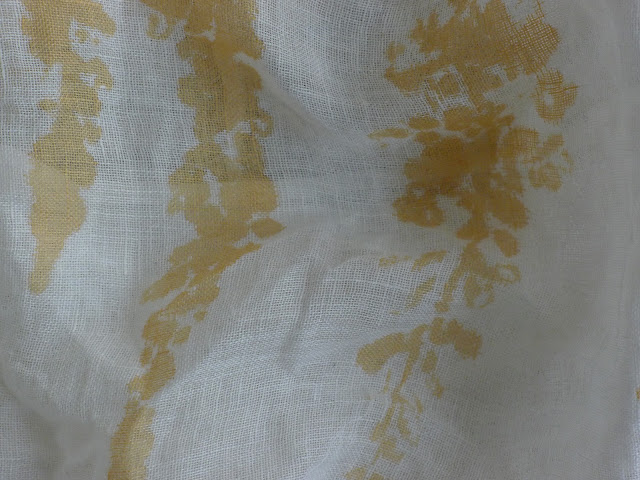
Teaching in a specialized field like screenprinting and surface design gives me an opportunity to travel for work. I'm a most-of-the-time Hamilton resident, and some-of-the-time Calgary resident, spending the winter term at the very wonderful Alberta College of Art.

One of the classes that I teach there is the Fibre 101 class, which focuses on 2D work. I've been wanting to add a natural dye project into the class, particularly one that can be done outside of school, requiring no specialized equipment. So much of what I teach relies on specific, often expensive tools such as exposure units and vertical fabric steamers, and I remember coming out of school totally unsure of how to do things on my own.

The class was given the task of purchasing a silk scarf, eating pasta or pickles for a week to obtain a 1L-ish glass canning jar, and collecting natural materials that they thought might provide colour. I wasn't very specific with the materials, just asking them to gather what they could find from nature or from the kitchen. This was, of course, the week it was minus thirty-five outside, so most of the materials were from the kitchen.

After being laid out, the silk scarves were folded over to fit into the jar, and then rolled around a stick that the students also had to find. Then they are tightly bound with twine, and tucked into their jars. Some students opted to add a colour modifier in the form of giant rusty bolts [iron], old pennies [copper], or in one case, a huge, beautiful copper mineral deposit that the student bought from a gem and mineral show. We then filled the jars with a 10% alum solution, as alum is a good colour-brightening mordant that helps to stick the colour to the fabric, and usually brightens colours as well. oh, and all that drawing you see happening? that is each person making a 'map' of where they put what, so they could have a reference for what material made what colour when we were done. I'm big on note taking.

 The jars are then placed in a sunny window to let the heat of the sun cook the fibres and their contents, as in the first image. A week later, we unpacked the jars, shook them out over a bin, and then rinsed the scarves. I learned a great lesson from my class in this assignment - use lots of herbal teas! They make the unpacking process actually nice smelling [my test run was really, really gross! make sure the bundle is submerged in the jar, or you get mold. Lots of it], and hibiscus and rose petals provide lovely colour.
The jars are then placed in a sunny window to let the heat of the sun cook the fibres and their contents, as in the first image. A week later, we unpacked the jars, shook them out over a bin, and then rinsed the scarves. I learned a great lesson from my class in this assignment - use lots of herbal teas! They make the unpacking process actually nice smelling [my test run was really, really gross! make sure the bundle is submerged in the jar, or you get mold. Lots of it], and hibiscus and rose petals provide lovely colour.








